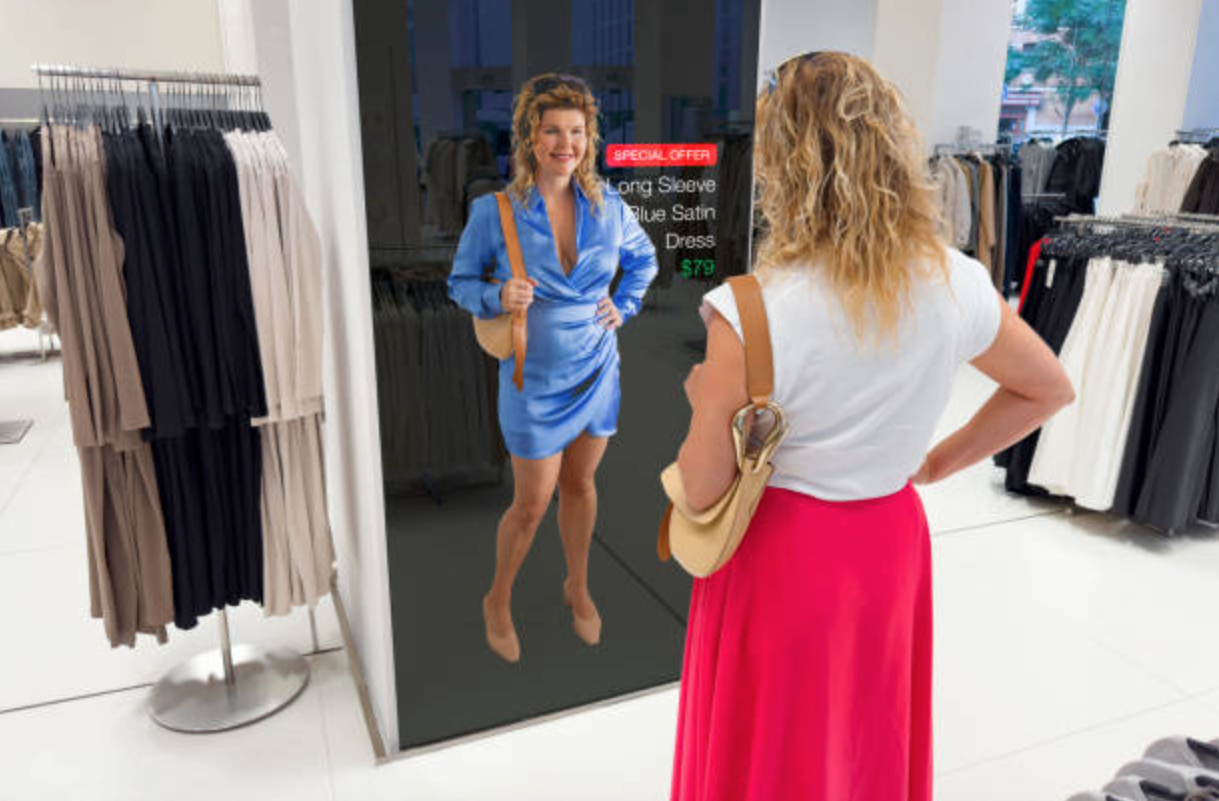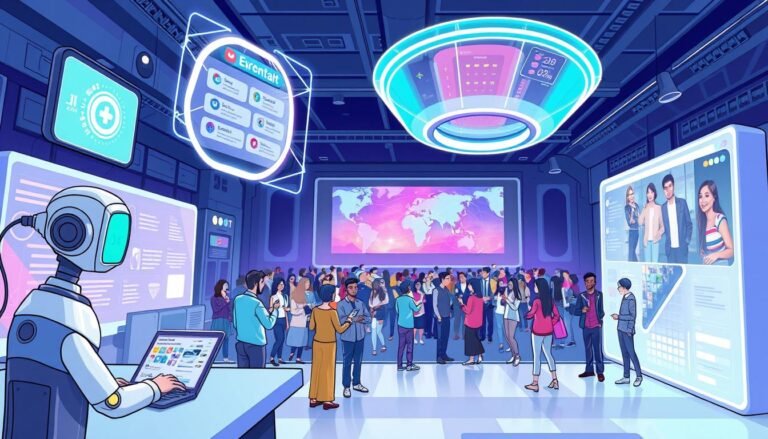Try Before You Buy: How Augmented Reality is Changing Online Shopping
Technology is confidently changing every sphere of our lives. And shopping is no exception. Catalogue flipping is in the past. Today, we scroll through endless online options and make purchases right from our homes. Online sellers are looking for creative ways to captivate customers and stay ahead of the competition, and augmented reality (AR) proves to be revolutionary for shopping.
The AR market is projected to hit $198 billion by 2025, so its potential is huge. But how exactly is augmented reality used in sales, and how can it transform the shopping experience? Let’s find it out together in this article.
What is augmented reality (AR)?
This technology blends digital elements with the real world and creates a unique interactive experience. Virtual reality immerses you in a fully digital space, and AR adds digital layers to your real surroundings. You can access AR through smartphones, tablets, or AR glasses.
Augmented reality (AR) first appeared in shopping during the early 2010s. It started as a fun, attention-grabbing tool for marketing. Cosmetics brands led the way with virtual makeup try-ons, allowing shoppers to engage with products. Over time, AR became more practical. By the mid-2010s, fashion brands were using virtual fitting rooms, and furniture stores allowed customers to see how items would look in their homes. It was exactly what customers wanted – more personalization and convenience. Today, AR plays a big role in online shopping. Read on to discover how it works!
How is AR used in online shopping?
Technology gives tons of advantages to businesses, including e-commerce, but it also makes consumers more technically savvy and demanding. Surveys show that 75% of shoppers expect retailers to offer some kind of AR experience. Many big brands have already adopted AR in some way. And here is how it works in real life.
- Virtual try-ons. AR has transformed the traditional shopping experience – it allows customers to try different products right on their screens. All you need is a smartphone or tablet camera to test the color of lipstick and try on a pair of sunglasses. This interactive experience allows buyers to have a better idea of how goods will look on their bodies before they pay for them.
Example. Nike’s AR-powered app allows users to measure their feet and virtually try on sneakers to find the perfect size and style. This saves time and makes the shopping process more personal.
- Product demonstrations. Interactive product demos with AR let customers see products in a more realistic way, even from home. Users can view 3D models of items and see how they fit into their own space. For example, a furniture store may let you virtually place any interior piece in your living room to check how it looks. You can even change its color or size to see different options. Some AR demos allow you to try out how a product works.
Example. The Volvo Reality app offers an immersive test drive experience that feels like you’re actually behind the wheel. Simply download the app and take a virtual ride through stunning mountain landscapes in the new XC90, Volvo’s most intuitive model.
- AR mirrors for in-store shopping. These interactive mirrors use augmented reality to improve the shopping experience. You can virtually put on clothes or accessories without physical try-ons. The technology uses cameras and sensors to detect the customer’s reflection and show how the chosen goods will look in real time.
Example. Zara has started to use AR in select stores. The brand allows customers to interact with virtual fashion displays. When scanned with the Zara app, AR features bring the clothes to life and demonstrate different looks and styling options.
- Social media app filters. Businesses use AR filters as a creative way to engage with their customers and offer fun, personalized content. Users experiment with filters and share results on social media. This user-generated content attracts new customers, and even event photographers are incorporating AR elements to enhance engagement and create unique, interactive experiences for clients. Instagram and Snapchat have integrated AR filters into their features – brands can use these to connect with their audience. For more insights on how this technology is revolutionizing brand interactions, explore augmented reality ar in social media marketing. As social media becomes even more popular, AR filters will provide brands with an interactive way to connect with customers in a more personal way.
Example. Pepsi and Taco Bell use AR to craft fun filters that let users play around with their products or characters. Take Pepsi, for example, where users could turn into dancing hot dogs during a Super Bowl campaign. Taco Bell had turned users into tacos with their own playful filter. These fun experiences help brands reach even more people in a memorable way.
- Gamified shopping experiences. AR can transform shopping into a true adventure. Imagine a fun treasure hunt where customers explore a virtual store or even hunt for hidden items in a physical store using augmented reality. This makes customers come back for more. AR gamification offers a creative way to keep shoppers entertained and build stronger, lasting relationships with them. Many brands also enhance these experiences by offering coupons & discount codes as rewards for interacting with AR features, encouraging customers to engage with the brand while enjoying exclusive savings.
Example. Puma’s stores have used AR to create a “Puma treasure hunt.” Customers are offered to explore different store sections, unlock virtual prizes, and receive discounts when they interact with AR objects.
Benefits of AR for e-commerce
Augmented reality (AR) brings many benefits to online shopping. It makes shopping more interactive and encourages consumers to buy more. AR also reduces return rates as it brings customers’ expectations much closer to reality. They can see exactly how products will look in their space or on them and avoid wrong choices. In addition, AR increases customer confidence. When shoppers can try before they buy, they feel more certain about their decision and come back for more.
Challenges of AR in online shopping
Augmented reality opens up new opportunities for retail. However, it also brings things to consider:
- Technical complexity and cost. Adopting AR is not as simple as it may look at first glance. You will need significant investments in software, hardware, and technical expertise. This process is costly and time-intensive for small retailers.
- Offering user-friendly experiences. Customers must be able to use the technology to the fullest to enjoy it. You must deeply understand how your customers interact with digital tools. AR applications must be simple to navigate, load quickly, and work across a range of devices without glitches. Utilizing cross platform app development services can help ensure your AR solutions deliver a consistent experience, minimizing frustrations that might drive users to competitors. Data privacy and security. AR collects a lot of sensitive data for personalization purposes. Retailers must follow strict regulations and adopt advanced security measures to protect consumer information.
Wrapping up
Augmented reality (AR) will keep changing the way we shop, and its role will only grow. As technology advances, AR will make shopping more personal and interactive. Consumers will want even more engaging experiences, and AR can deliver them effortlessly. Retailers who will implement AR into their shopping processes will surely win. The line between online and in-store shopping is fading, and AR is leading the way in creating smoother, more enjoyable shopping experiences for all. AR is here to stay, so it’s time to embrace it!







